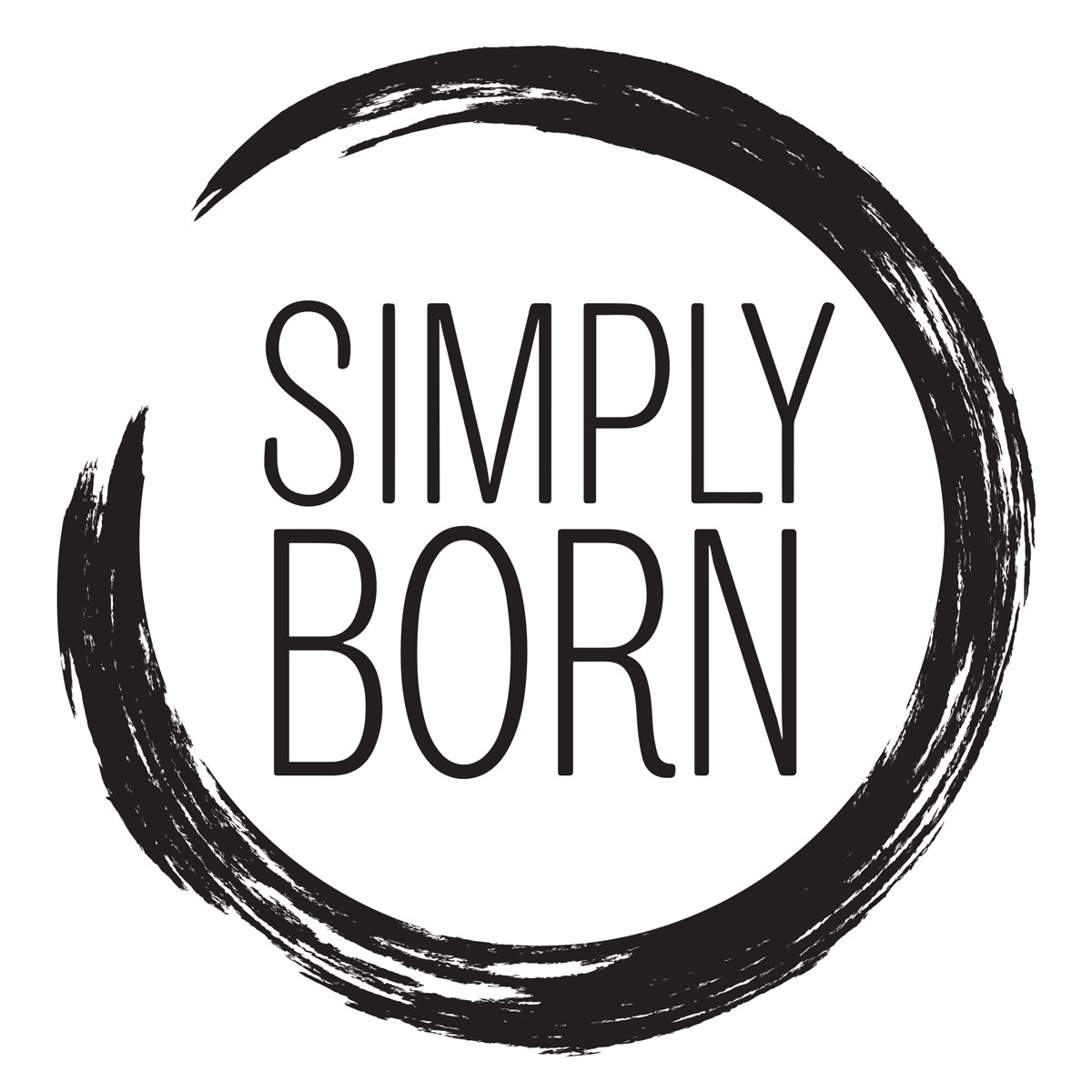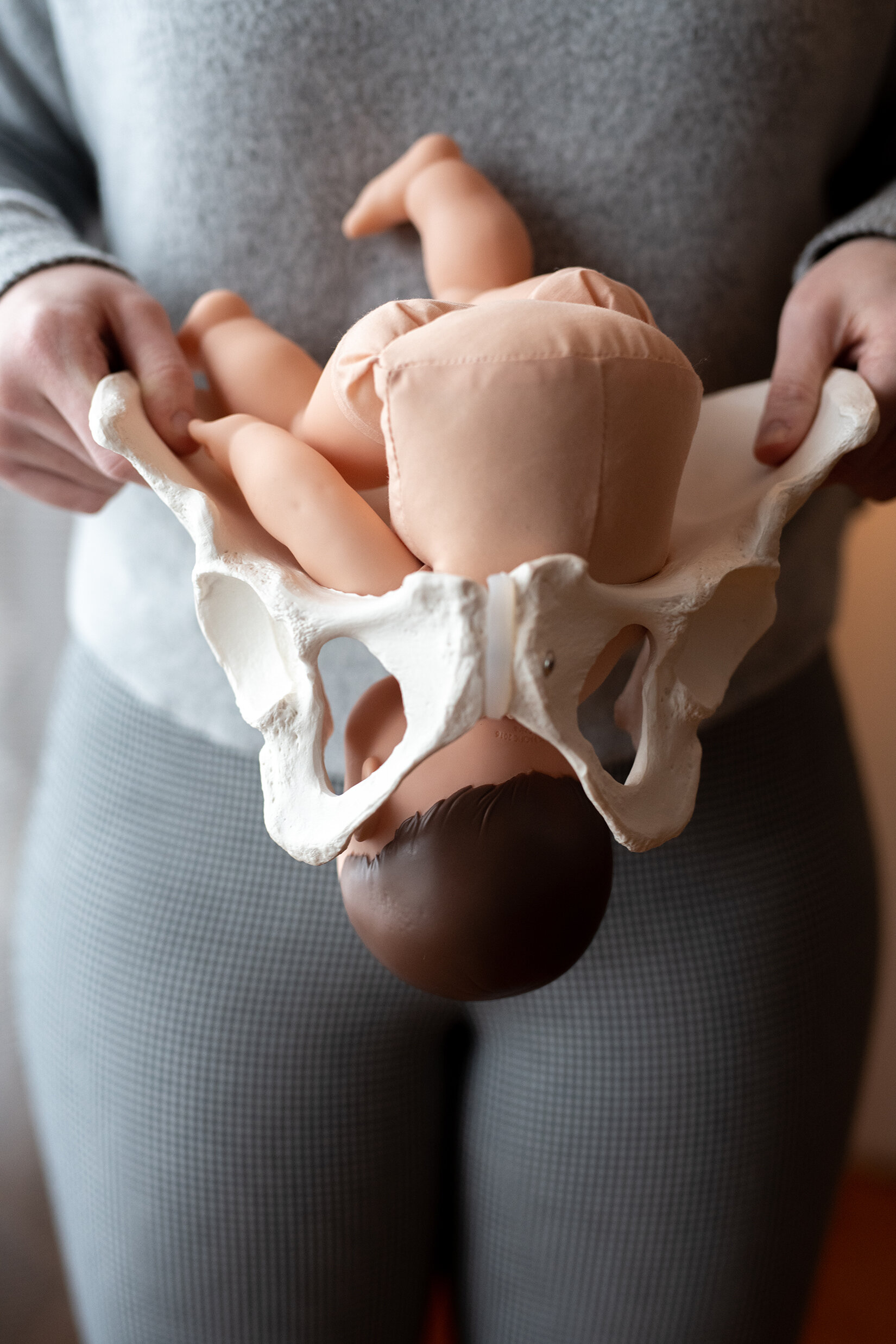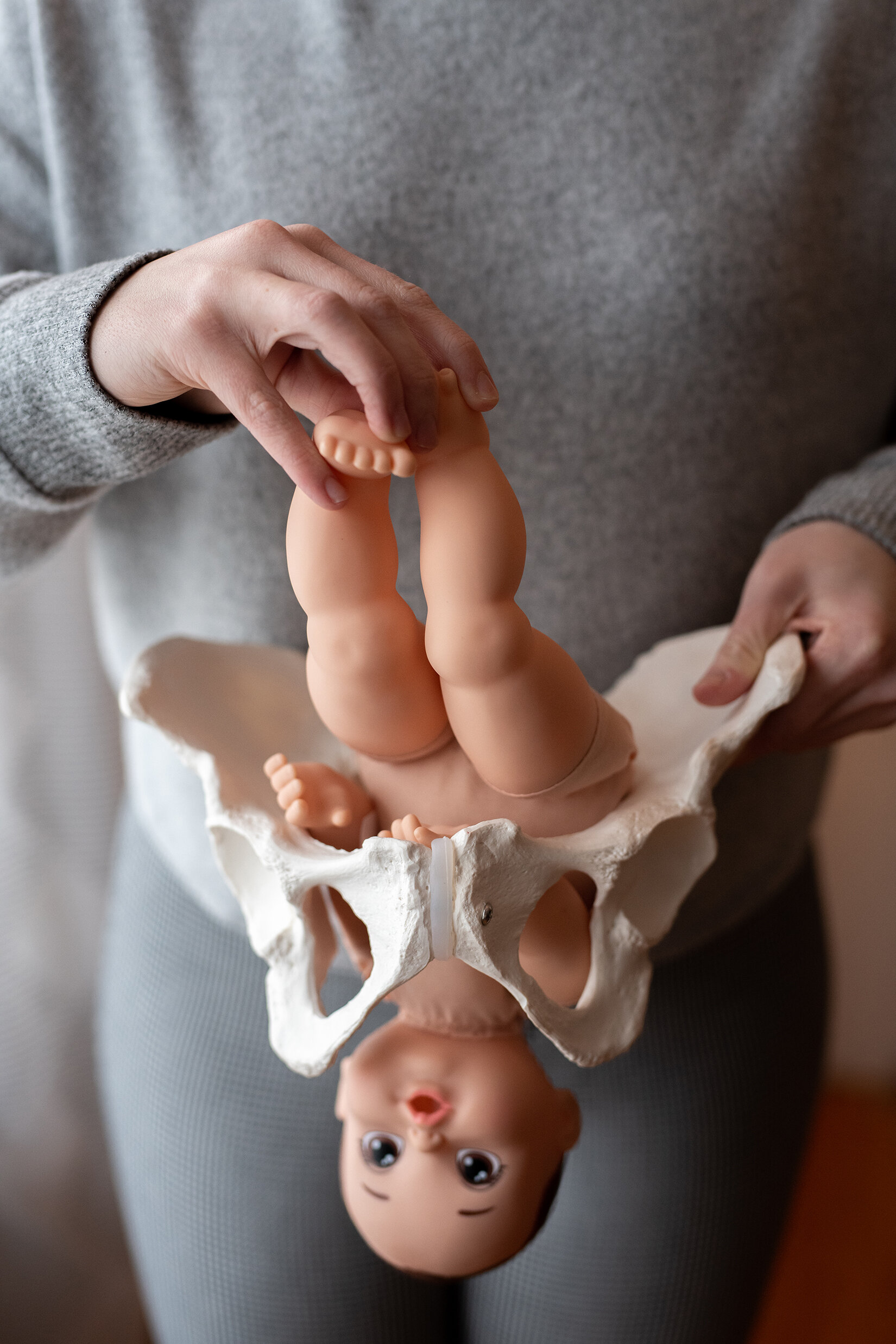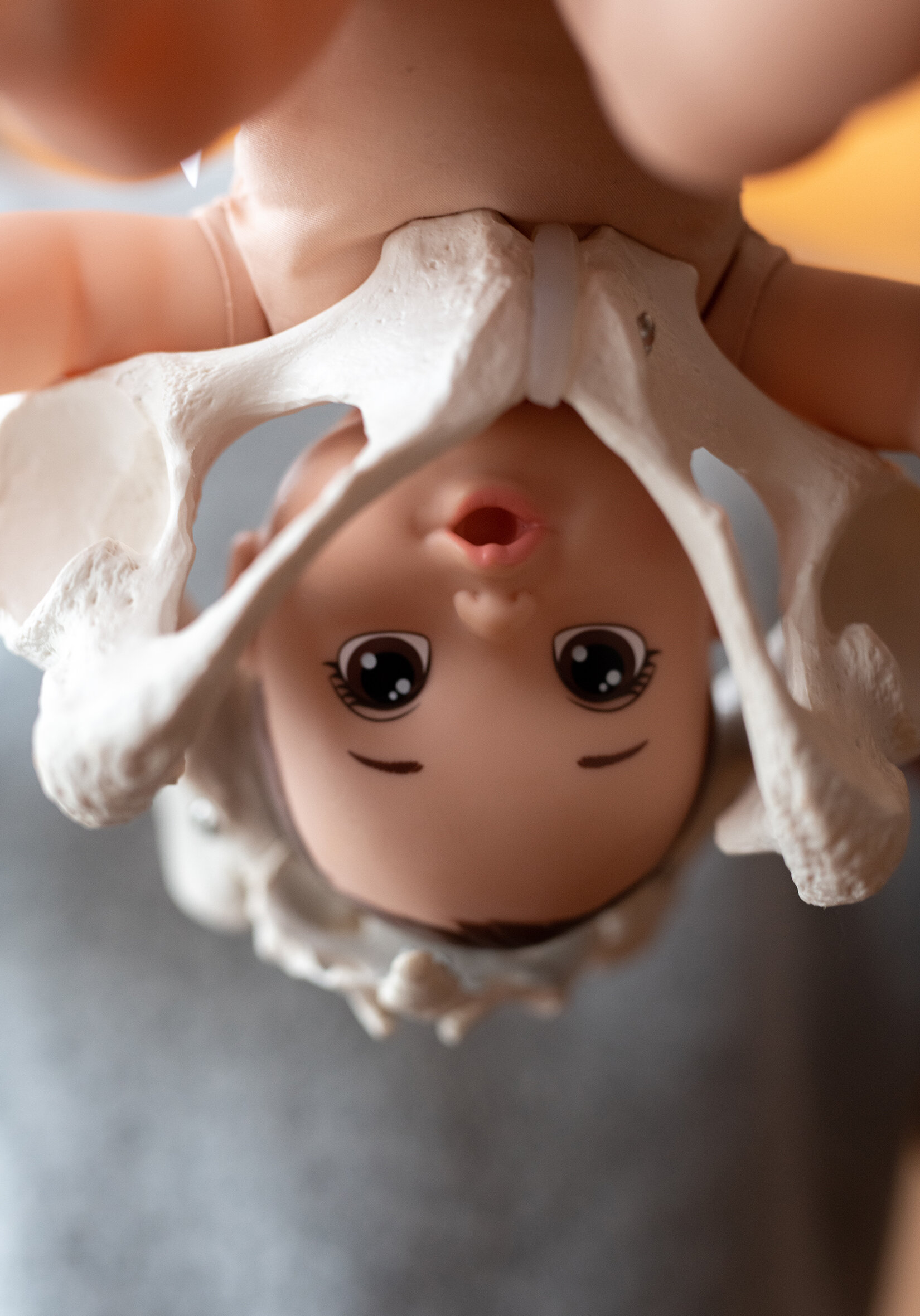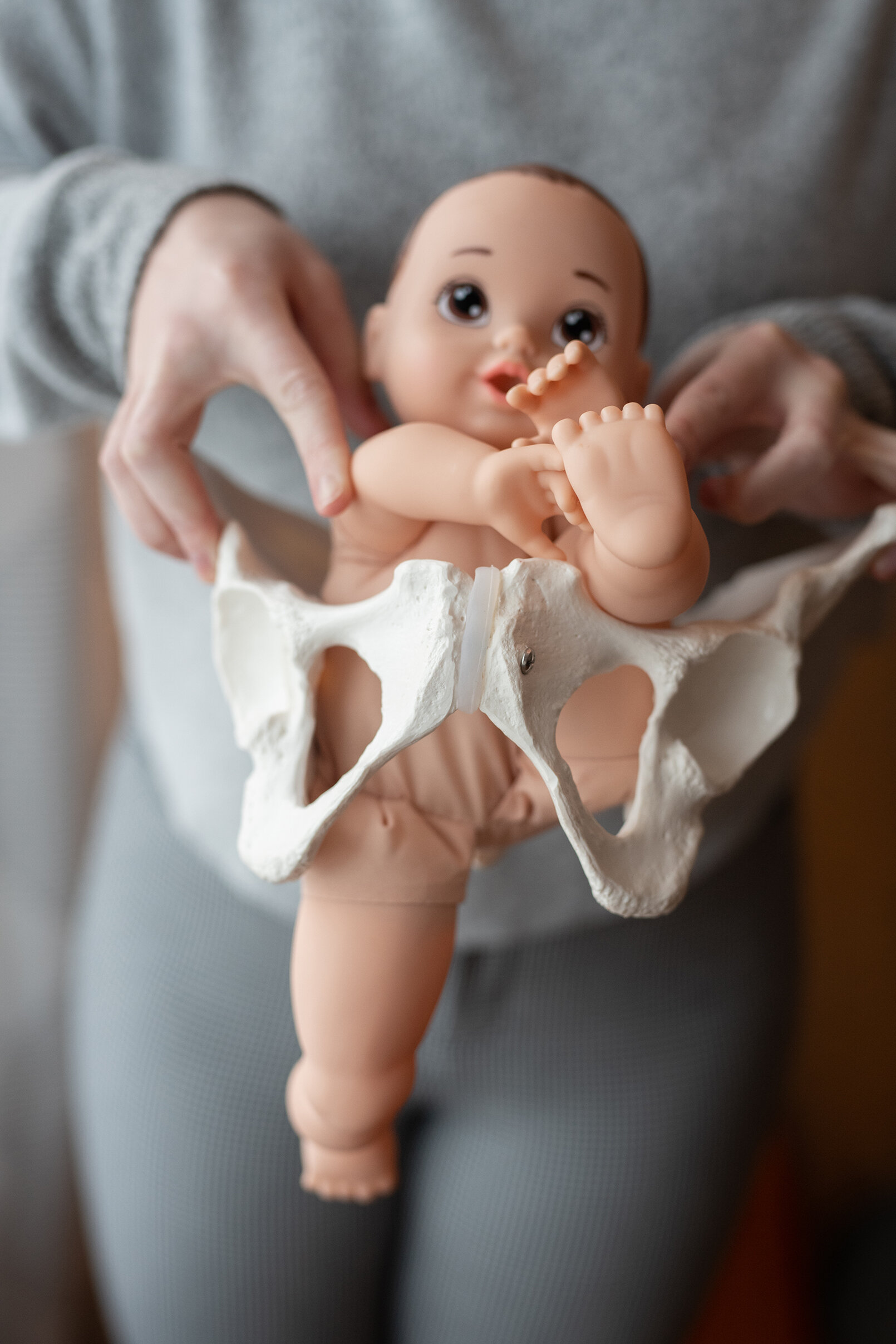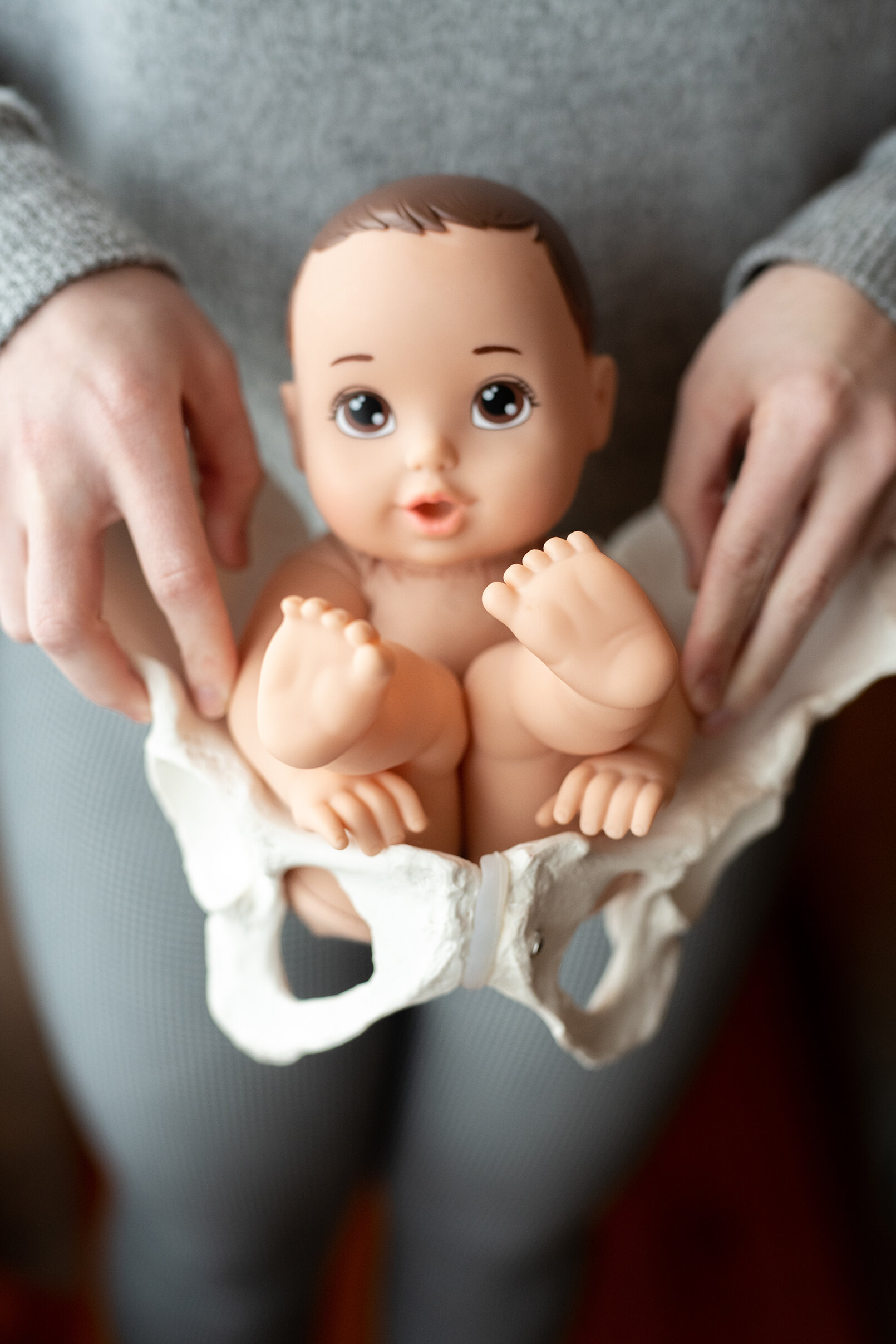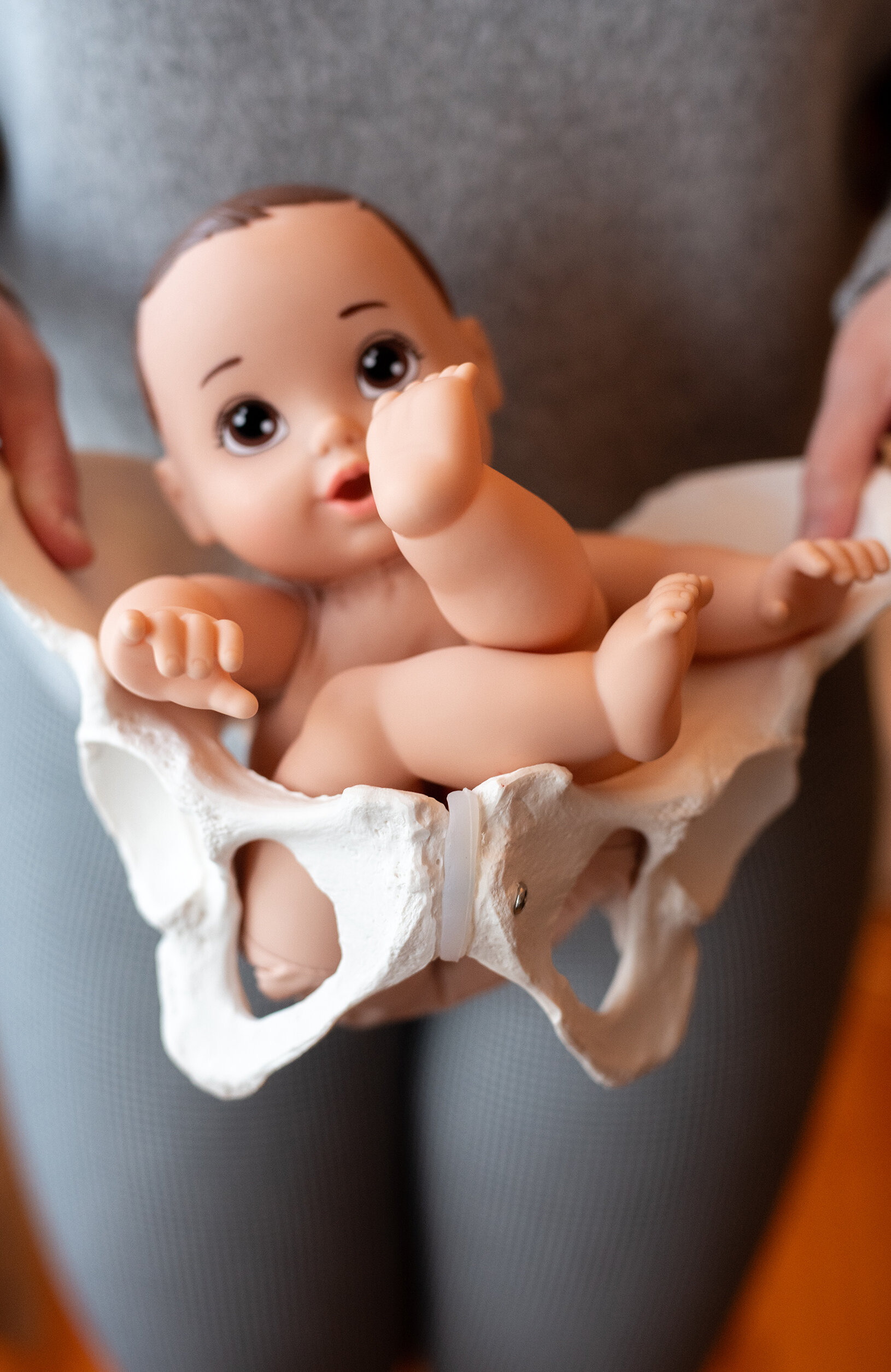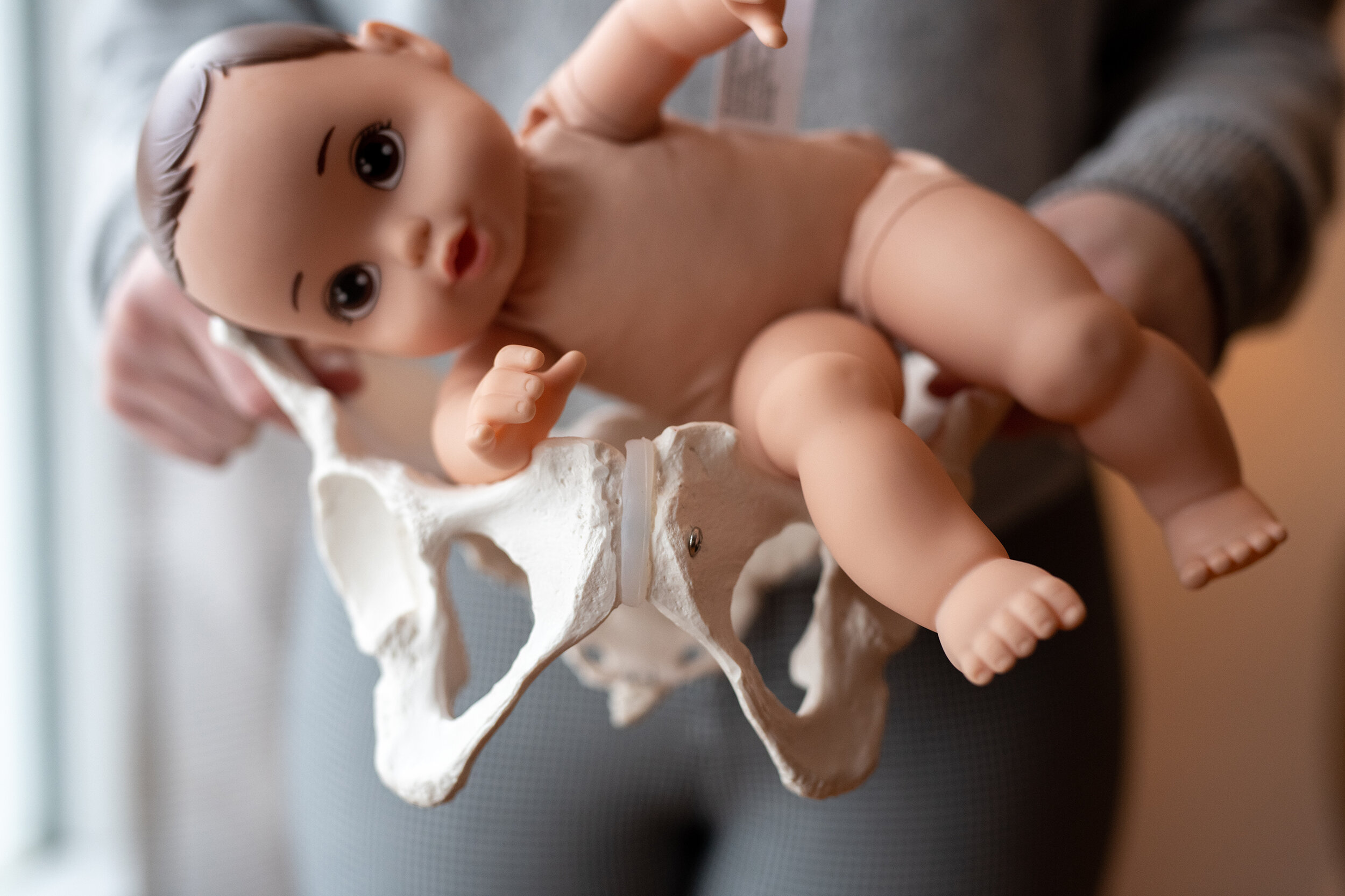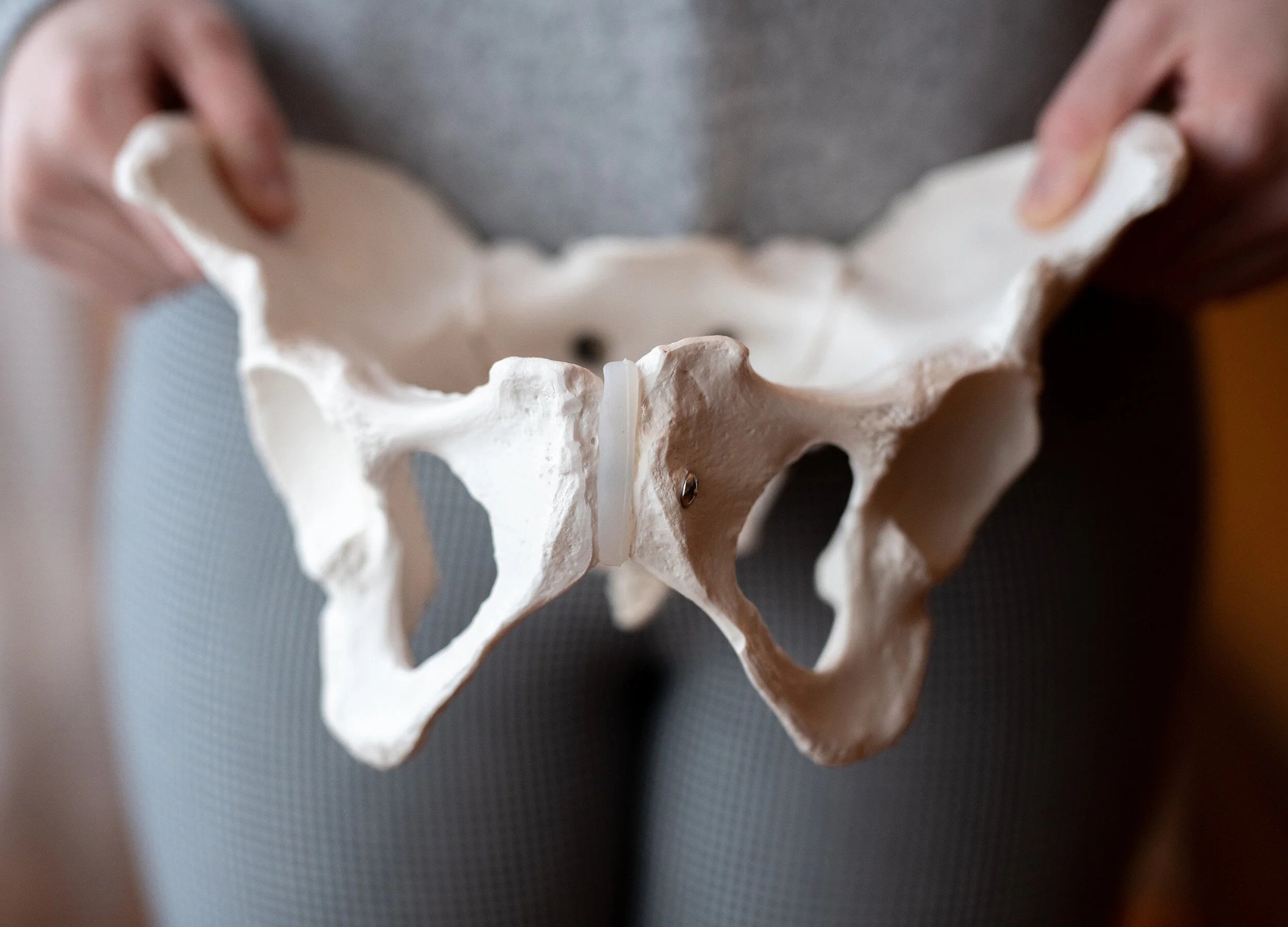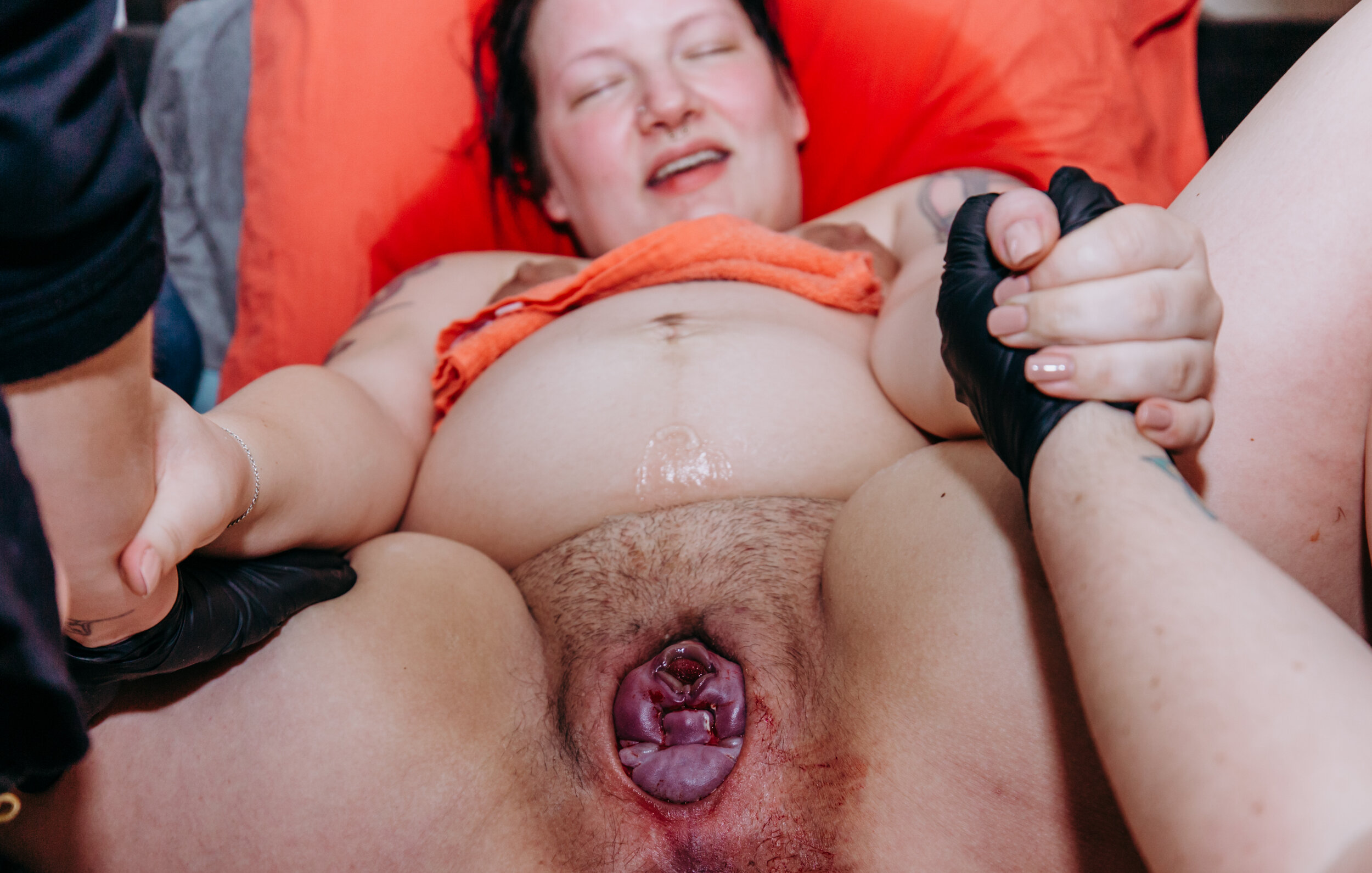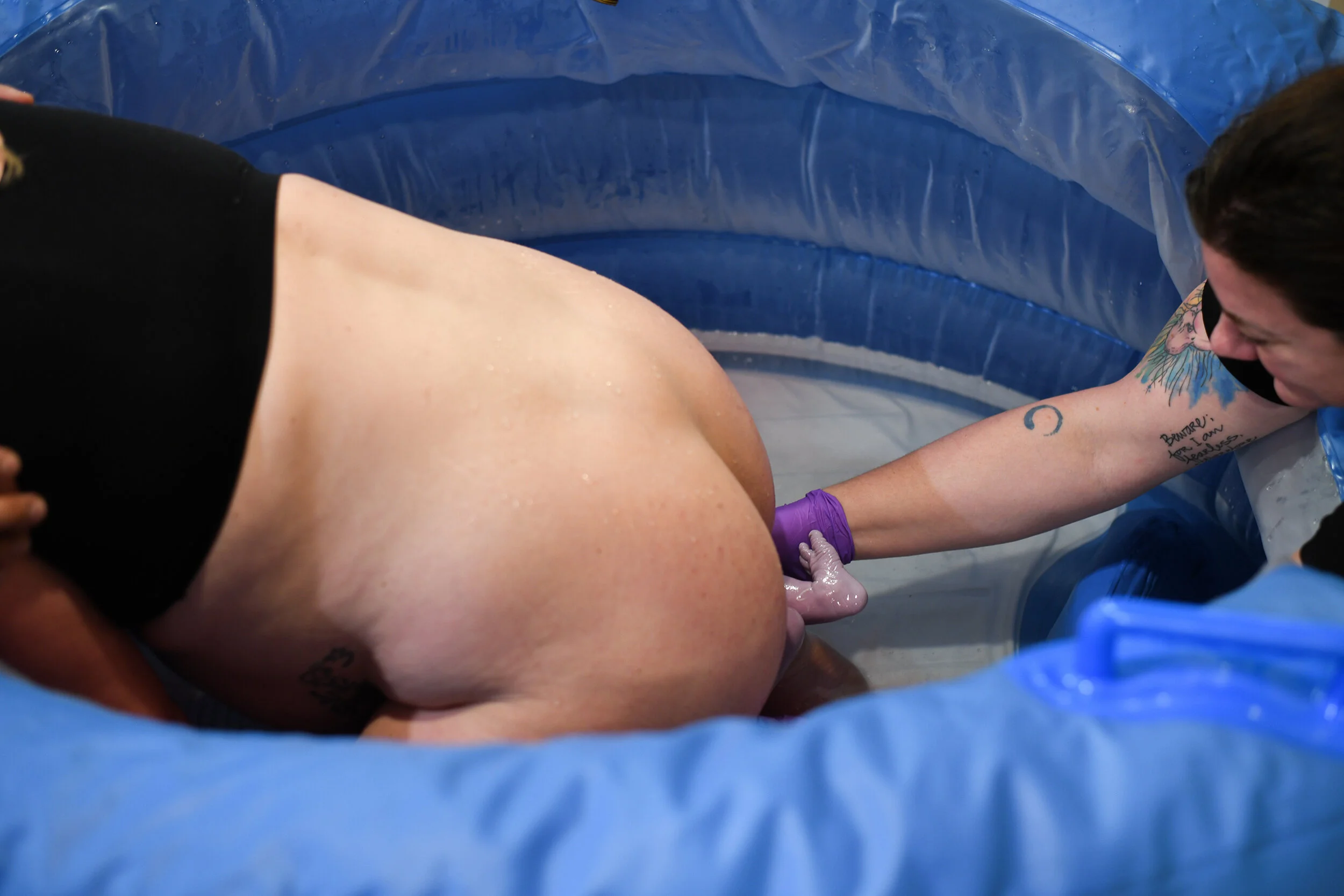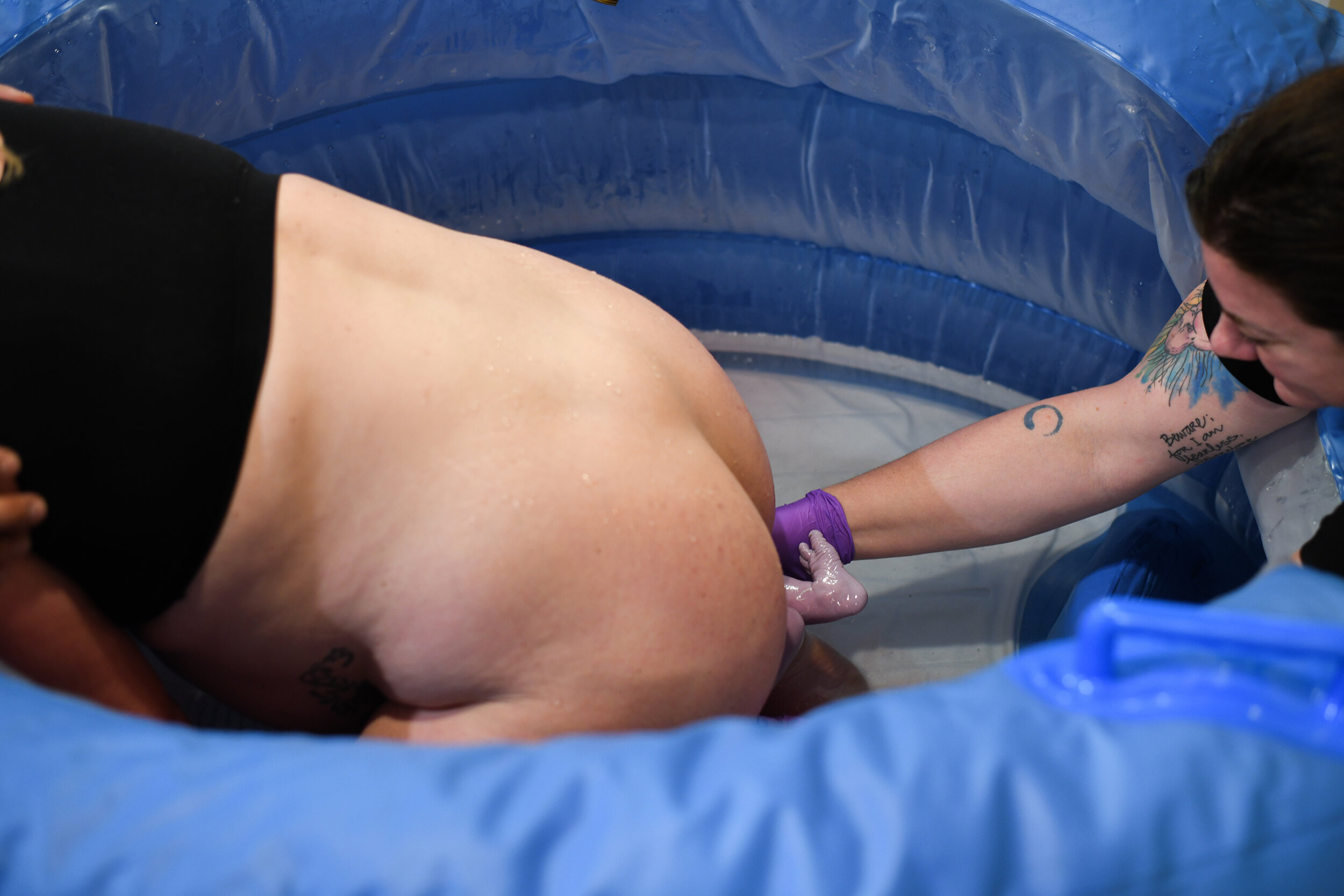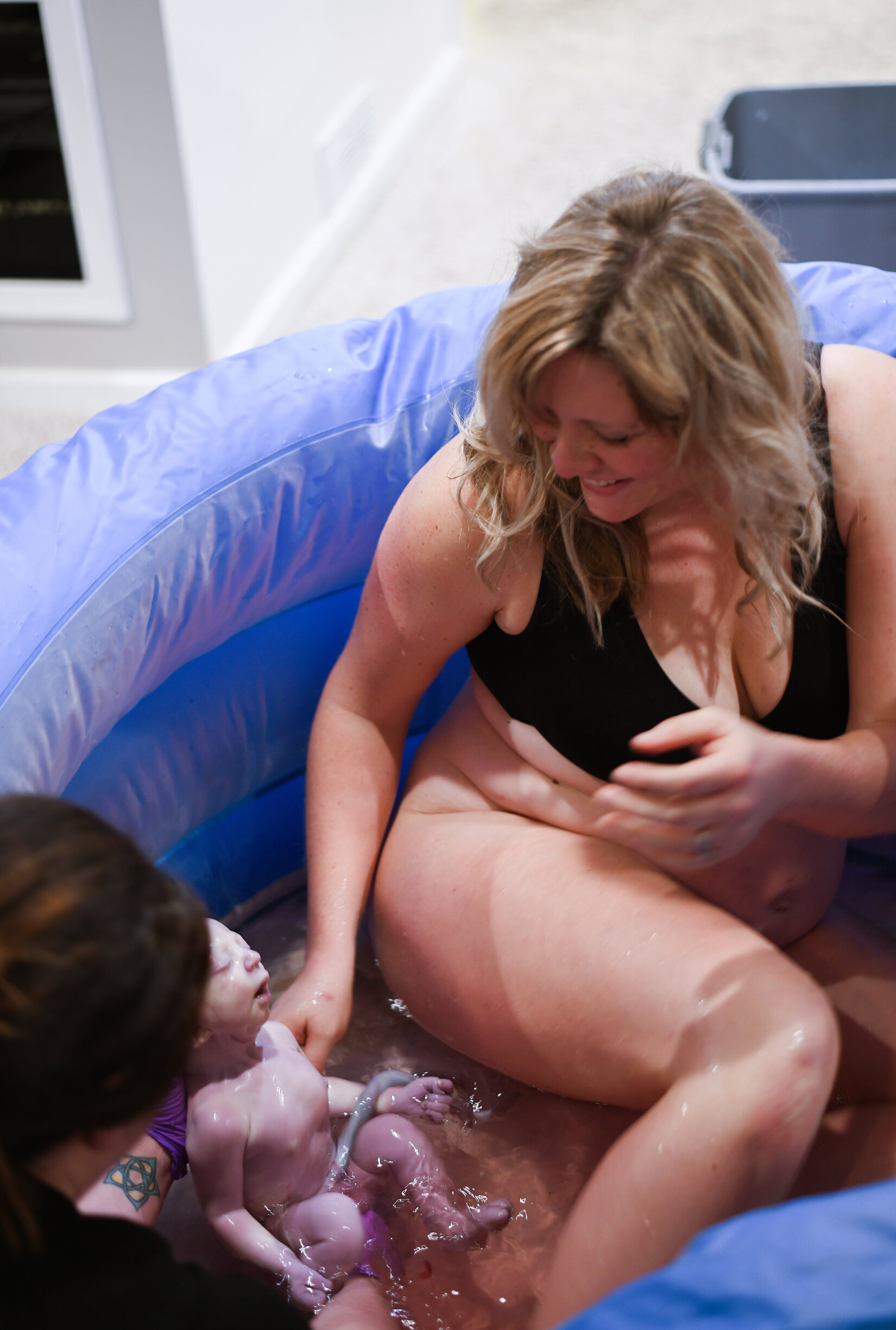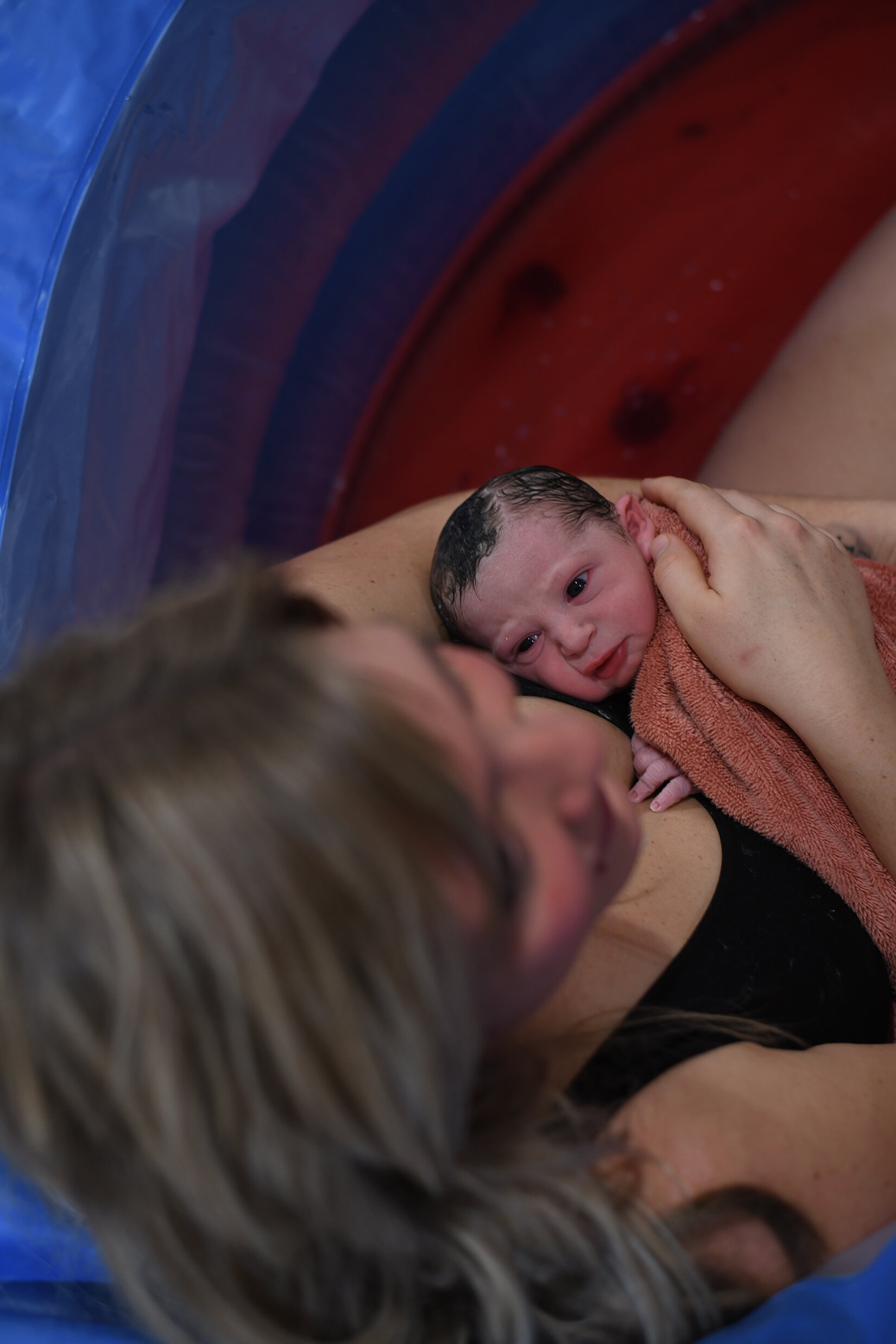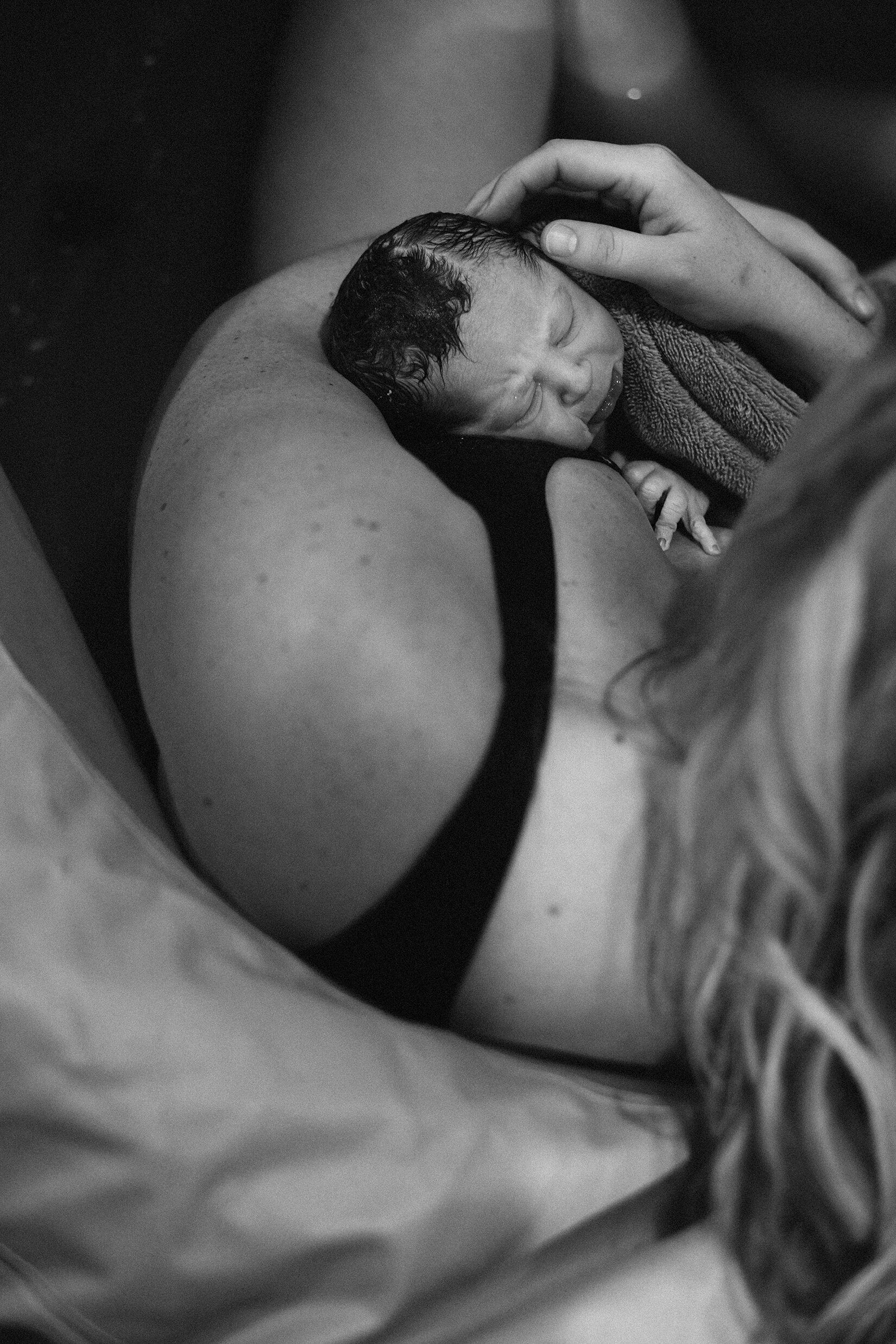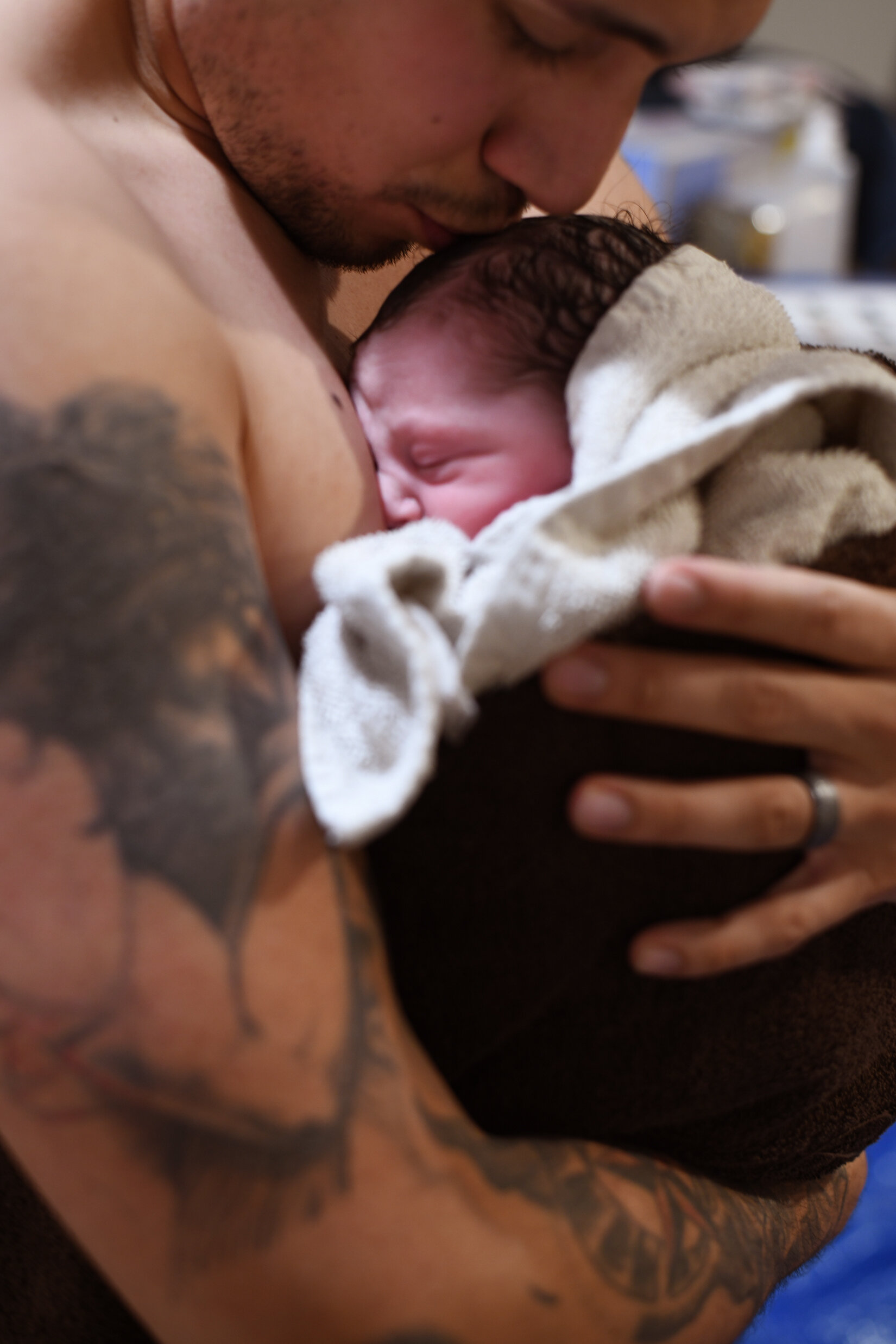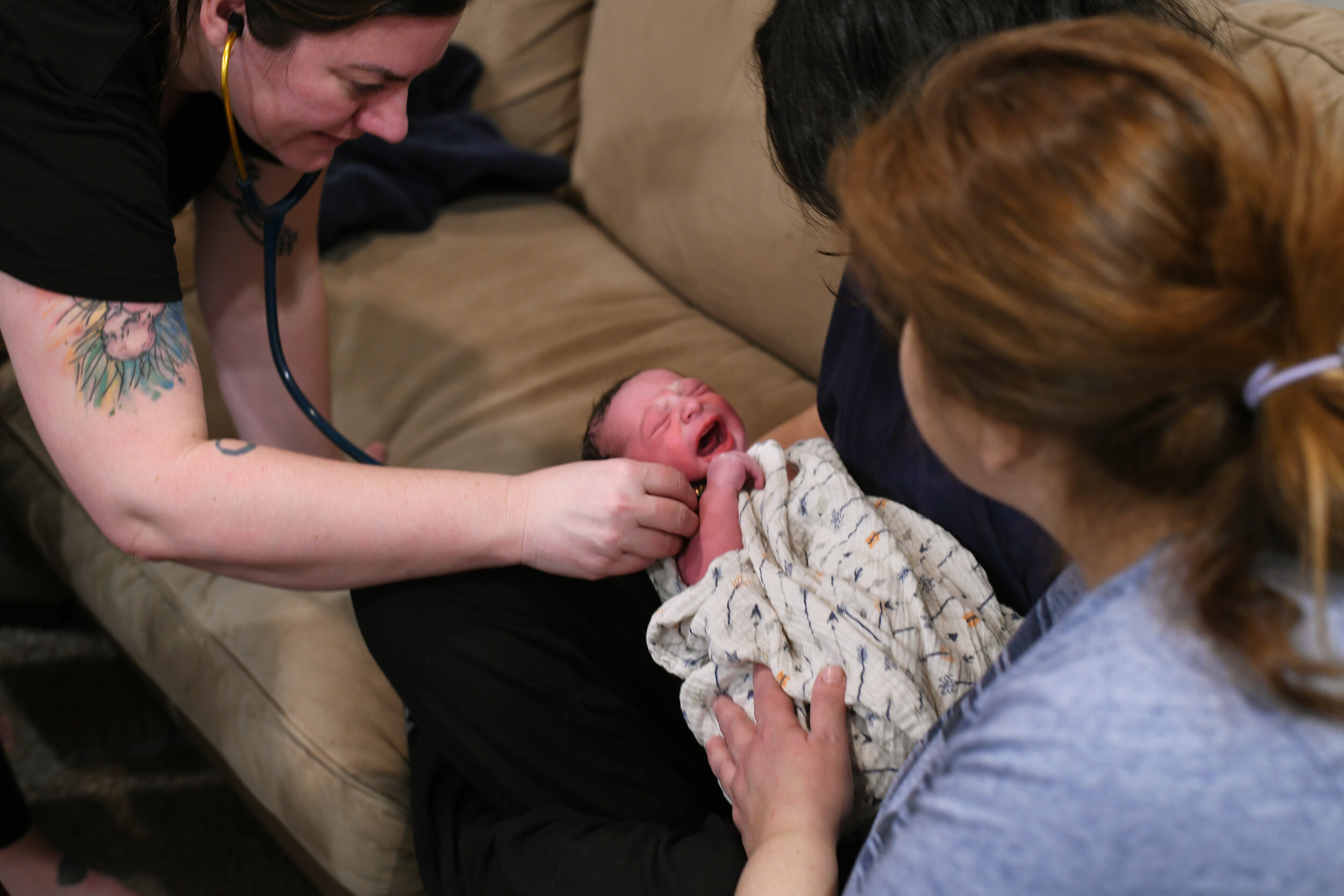by Audrey Waddell
Why does baby position impact labor?
The position a baby finds itself in during labor dictates how the baby needs to be born. The fetal position dictates how the baby is going to rotate to come through the pelvis. A “textbook birth” has the baby essentially corkscrew as they are born. Other positions pose an inconvenience, they may slow labor, change the sensations felt by the birther, or slow the pushing stage. There are some positions that don't work well with the pelvis and these babies need to be born by cesarean.
How do midwives determine fetal position?
Early in pregnancy the midwife will assess your lower abdomen to see how high the uterus is, at this point it's too early to know what the baby’s position is. Just over halfway through pregnancy the baby's position can be “mapped” from the outside using the most basic of tools - the midwife's hands. Palpation is performed by the midwife during regular prenatal visits to figure out what position the baby is in at that moment. It can’t predict what the baby will do 20 minutes from now, let alone in a week's time, but it gives a snap-shot of where the baby is at present. It is useful to check in on baby position to make sure they are well-situated and there are no concerns about their positioning while in-utero.
Midwives use a series of hands-on assessments to approximate the baby's position. They will palpate the top of your uterus (fundus), along both sides of the uterus, as well as right above the pubic bone (front of pelvis). Your midwife will often involve you, your partner, and children in this process, with your consent, to teach everyone about how babies get cozy in the womb.
How can you detect these positions yourself?
Talk with your midwife during prenatal appointments and pay attention when they are assessing the babies position so you can apply that knowing yourself. When you want to check on the babies position - lie back in a comfortable position and tune in to baby movements, notice where you feel hiccups, small brushing motions, kicks, and round firm surfaces. It takes time to learn, and figuring it out on your own body can actually be more difficult than feeling on someone else.
While midwives make it a priority to teach you through your pregnancy about how the baby is positioned, there are online resources which can give you even more information. Check out Spinning Babies for information on their “belly mapping”, or ask your midwife for additional resources!
Variations of normal
Cephalic/vertex
These babies are positioned with their heads down in the pelvis. This is the “traditional” way babies are born. There are plenty of variations even within this section but we will stick to the basics here. Midwives like to see a “well-flexed” baby, this means their chin is neatly tucked into their chest making it an easier business to be born. De-flexed babies are the ones who for whatever reason have their heads extended to some degree. They can be so extended that the presenting part ends up being their face or their forehead.
Face/mentum
*Face presentation images by Keysha of Brick Street Studio: https://brickstreetstudio.photography
Face presentations are not common, occurring in about 1/600 births and brow presentations are even more rare at about 1/2000 births. These positions which force the baby to have their head extended can be born vaginally, but labour may be slowed substantially to allow the babies head to mould differently on its way out. Even so, there are situations where these babies just can’t quite navigate the tight quarters of a pelvis and need to be born by cesarean.
Occiput Posterior
Commonly called “O.P” or “sunny-side-up”, this position is where the baby is born with their face looking upward and their back along their parents back. Approximately 15-30% of babies start labour in this position, but only about 5% are born posterior.This is because often babies are able to rotate during labour into a more favourable position. Babies are more often born “O.A” (occiput anterior), meaning they are facing downward toward their parents' back. Back-labour is often a feature associated with posterior birth because the hard back of the baby's head puts increased pressure on the parents spine as they descend into the pelvis. Posterior labours can feel long and drawn out and parents may find it difficult to relax into the process. Midwives can offer practical tips for optimal positioning prenatally and during labour and birth to encourage the baby to rotate into an anterior position.
Breech
*Breech images by Rhiannon of http://rhiannonmccalmontphotography.squarespace.com
Statistically quite common, breech presentations occur in about 3-4% of births, the younger the baby, the more likely they are to be in a breech position at birth. There are several types of breech positions: frank (bum first), complete (cross-legged), footling (feet first), kneeling (knee first). Some of these positions are favorable for vaginal birth, and others pose too great a risk and require cesarean delivery. Working with a provider experienced in vaginal breech delivery is important for keeping the experience safe for the parent and baby. Providers commonly recommend manual rotation of the baby before labor when possible. This is called an external cephalic version and is a procedure used to encourage the baby into a more favorable head-first position.
So how is a baby born breech?
Once the baby has gotten all the way through the pelvis and is on their way out they reach a point known as rumping, this is the bum-first equivalent of crowning. First the bum emerges, then their legs, then their arms, and finally their head.
Transverse
Babies in this position cannot be born vaginally; instead of finding themselves in a vertical position they are horizontal in the uterus. Providers can try to manually rotate the baby into a better position for birth (external cephalic version), or the baby can be born by cesarean section. Young babies are more likely to be in this position than babies at term as they have more room to wiggle around.
Compound
This is a group of fetal positions where a limb is the presenting part at the cervix; this may be a hand, foot, arm, or leg and can happen with any of the earlier positions we’ve discussed. In general compound presentations occur in 1/500 births. The most common compound presentation is called a nuchal hand, this is when a baby is born with one or both hands tucked up beside their head/face during labour and birth. Some compound presentations are more complicated than others, for example a footling breech which is safest to be born by cesarean section.
Nuchal Cord
As midwives, we are often asked, “what happens if the cord is around their neck?” This occurs in roughly 1/3 of all births and is most often benign in nature. Typically the cord is looped around the neck once, though it is not uncommon to see it looped 2 or 3 times. Midwives are trained to help facilitate birth in a way which accommodates for nuchal cords and shorter cords by keeping the baby close to the parents body during the birth process. Occasionally a cord is looped rather snug around the neck and the provider may need to cut the cord to make room for the baby to be born - this is not often necessary.
Nearly all of these presentations can spontaneously “correct” themselves, depending how engaged (read: deep) they are in the pelvis. Providers may suggest an external cephalic version (ECV) to help the baby “right” itself, depending when the position is detected. An ECV can be useful for when a baby is breech or transverse.
How your posture and movements can influence baby position?
It is certainly beneficial prenatally to be mindful of your posture. This can influence the way a baby is positioned in your uterus and also can play a role in physical discomforts such as low back pain. Making an effort to maintain good posture and refraining from slouched positions when seated can make a difference, particularly when it comes to avoiding posterior positions.
Supportive positions we love are:
Sitting with hips higher than knees on chairs or exercise balls
Cat-cow yoga sequences
Forward-leaning stretches
Squatting
Sitting upright on sitz bones
